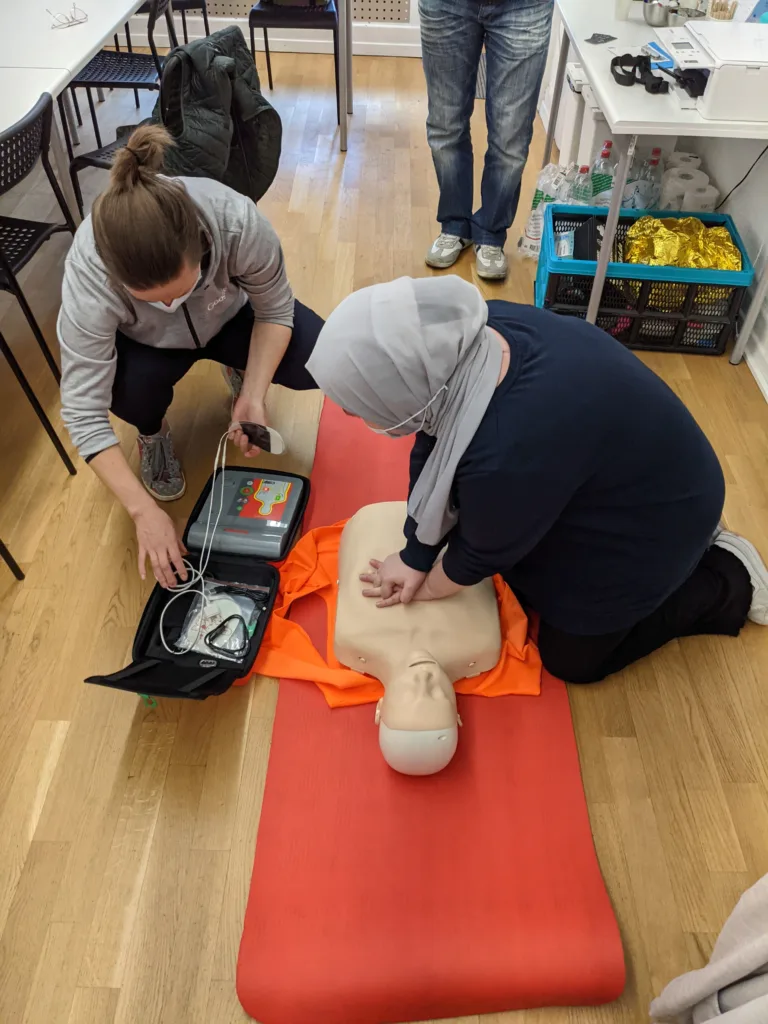Sternal rub is a widely used method of assessing the neurological status of an individual. It involves the application of painful stimuli to the center of the chest using the knuckles of a closed fist. This method is commonly used by emergency medical personnel to assess the responsiveness of an unresponsive patient.
The sternum rub is considered to be the most common form of painful stimuli used in the field by EMTs and paramedics. It is a quick and effective way to determine if a patient is able to respond to painful stimuli and is oftn used before more invasive techniques are considered.
However, it is important to note that sternal rub can cause bruising, particularly in fair-skinned individuals. As such, its use has been discouraged in some circles. If the patient does respond to the sternal rub, it is advisable to follow up with other forms of stimuli to determine the extent of their neurological function.
It is important to note that the efficacy of sternal rub depends on the duration and intensity of the stimuli applied. Central stimuli should be applied for at least 15 seconds, and potentially up to 30 seconds, in order to accurately assess their effectiveness.
While sternal rub is a useful tool for assessing neurological function, it should not be used as the sole means of assessment. Other forms of stimuli, such as verbal and visual cues, should also be utilized to ensure a comprehensive assessment of the patient’s neurological status.
Sternal rub is a commonly used method of assessing the neurological status of an individual in emergency situations. While it is effective in determining if a patient can respond to painful stimuli, its use should be accompanied by other forms of stimuli to ensure a comprehensive assessment. Its potential to cause bruising means that its use should be carefully considered, particularly in fair-skinned individuals.
What Is A Sternal Rub Do?
A sternal rub is a physical examination technique that involves rubbing the sternum, which is the flat bone that sits at the center of the chest, with the knuckles or the back of the hand. It is commonly used in the medical field as a method of assessing a person’s response to painful stimuli. The purpose of the sternal rub is to elicit a response from the individual, which can help in determining their level of consciousness and neurological status. The sternal rub is typically used in emergency situations, such as when a person is unresponsive or has a decreased level of consciousness. It is important to note that the sternal rub is a painful procedure and shoud only be used by trained medical professionals who are familiar with its proper use.

Why Is A Sternal Rub Not Recommended?
A sternal rub is not recommended due to the potential for bruising in fair-skinned individuals. This type of stimulation involves applying pressure to the sternum in order to elicit a response from an unresponsive person. However, the pressure applied can be excessive and cause injury to the person, particularly those with fair skin. Additionally, there are other less harmful and more effective methods of stimulation that can be used to assess a person’s responsiveness. Therefore, it is recommended to avoid using sternal rub as a method of stimulation.
Is A Sternum Rub Painful?
A sternum rub is painful. It involves applying pressure with the knuckles of a closed fist to the center of the chest of a patient who is not alert and does not respond to verbal stimuli. This painful stimulus is intended to elicit a response from the patient and determine their level of consciousness. The sternum rub is the most common painful stimulus used by EMTs and paramedics in the field. It is important to note that whie the sternum rub may be uncomfortable for the patient, it is necessary in emergency situations to assess their level of consciousness and provide appropriate treatment.
When Is It Appropriate To Do A Sternal Rub?
A sternal rub is a form of painful stimuli used to assess a patient’s level of consciousness or responsiveness. It involves rubbing the knuckles firmly against the patient’s sternum, which can cuse discomfort and pain. As such, it should only be used as a last resort when other forms of stimuli, such as verbal or tactile, have failed to elicit a response from the patient.
It is important to note that sternal rubs should not be used on patients who may have a spinal injury or other conditions that could be exacerbated by the application of pressure to the chest. Additionally, sternal rubs should be used with caution on patients who are elderly or frail, as they may be more susceptible to injury or discomfort.
In general, sternal rubs should only be used in emergency situations when a patient’s level of consciousness is in question, and other forms of stimuli have failed to elicit a response. They should be performed with care and only by trained medical professionals who are familiar with the proper technique.
Conclusion
Sternal rub is a useful method of assessing the neurological status of an individual who is unresponsive. While it is commonly used in emergency situations by EMTs and paramedics to assess responsiveness, it is important to note that the application of sternal rub can cause bruising in fair-skinned individuals. Therefore, clinicians should exercise caution when using this method of assessment and ensure that it is applied for at least 15 seconds to accurately assess its efficacy. Additionally, it is important to note that sternal rub should not be the frst line assessment of unresponsive patients, and other methods such as verbal stimuli or gentle shaking should be attempted before resorting to sternal rub. By using these precautions, clinicians can effectively use sternal rub as a tool in assessing the neurological status of their patients without causing unnecessary harm or discomfort.
